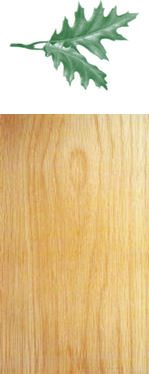CocoLumberRed Oak
 Red Oak
Red Oak
Uses:
The wood of the red oak is largely cut into lumber, railroad crossties, and veneer. It is remanufactured into flooring, furniture, general millwork, boxes, pallets, and crates, agricultural implements, caskets, woodenware, handles, and railroad cars and boats.
Description:
The sapwood is nearly white and usually 1 to 2 inches thick. The heartwood is brown with a tinge of red. Sawed lumber of red oak cannot be separated by species on the basis of the characteristics of the wood alone. Red oak lumber can be separated from white oak by size and the arrangement of pores in latewood and because, as a rule, it lacks tyloses in the pores. The open pores of red oaks make them unsuitable for tight cooperage.
Range:
Most red oak comes from the Southern states, the Southern mountain regions, the Atlantic coastal plains, and the Central states. The principal species are: northern red oak, scarlet oak, Shumard oak, pin oak, Nuttall oak, black oak, southern red oak, cherrybark oak, water oak, laurel oak, and willow oak.
Physical Properties:
Wood of the red oak is heavy (47lbs./cu.ft.). Rapidly grown second-growth oak is generally harder and tougher than finer textured old-growth timber, and shrinkage in drying is fairly large.
